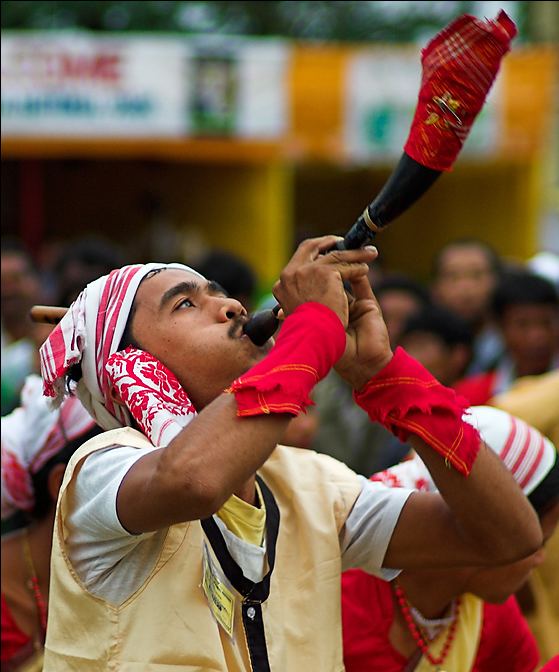 | ||
The Gamosa is an article of great significance for the people of Assam.
Contents
It is generally a white rectangular piece of cloth with primarily a red border on three sides and red woven motifs on the fourth (in addition to red, other colors are also used). Although cotton yarn is the most common material for making/weaving gamosas, there are special occasion ones made from Pat silk.
A 1,455.3 meter long Gamocha displayed in Delhi created world record as it became world’s longest hand woven piece of cloth.
Origin of the name
Literally translated, it means 'something to wipe the body with' (Ga=body, mosa=to wipe) however, interpreting the word gamosa as the body-wiping towel is misleading. The word gamosa is derived from the Kamrupi word gaamasa (gaama+chadar), the cloth used to cover the Bhagavad Purana at the altar.
Usage
Though it may be used daily to wipe the body after a bath (an act of purification), the use is not restricted to this.
One can therefore, very well say, that the gamosa symbolizes the life and culture of Assam.
Cultural significance
Significantly the gamosa is used equally by all irrespective of religious and ethnic backgrounds.
At par with gamosa, there are beautifully woven symbolic clothes with attractive graphic designs being used by different cultural sub-systems and ethno-cultural groups as well.
There were various other symbolic elements and designs traditionally in used, which are now only found in literature, art, sculpture, architecture, etc. or used for only religious purposes (in particular occasions only). The typical designs of Assamese-lion, dragon, flying-lion, etc. were used for symbolizing various purposes and occasions.
There are efforts underway to have the Gamosa registered with the Geographical Indication.
